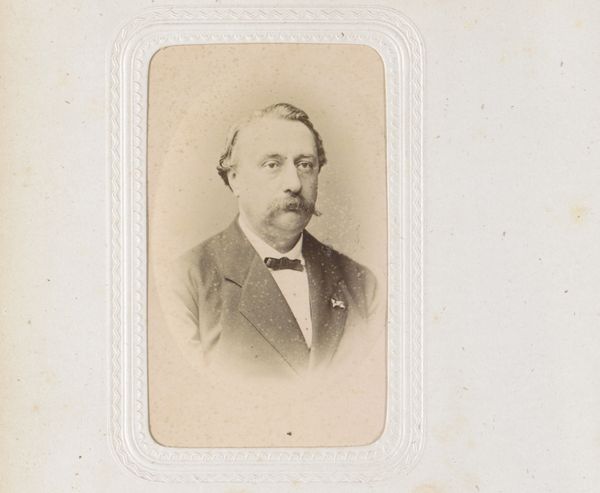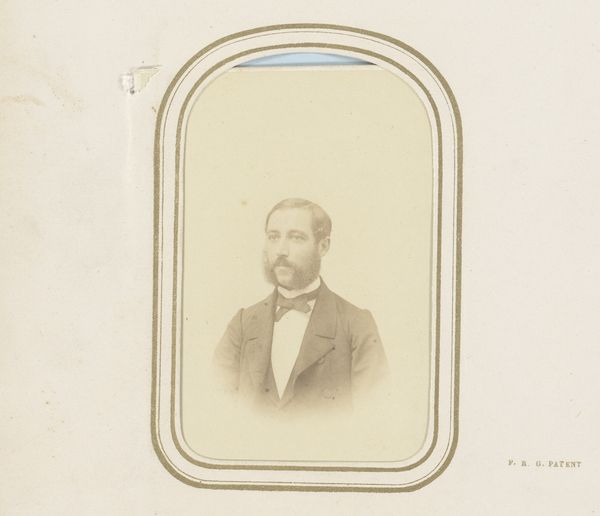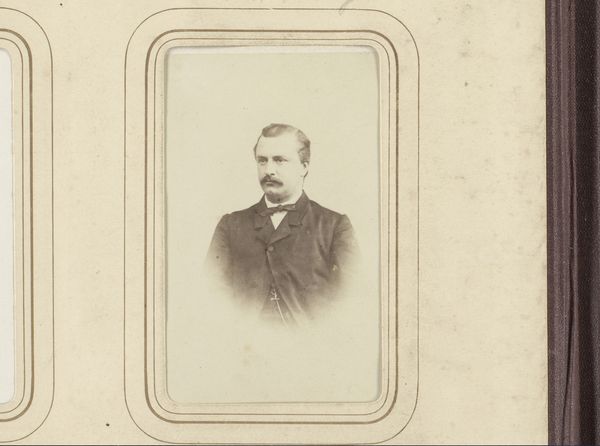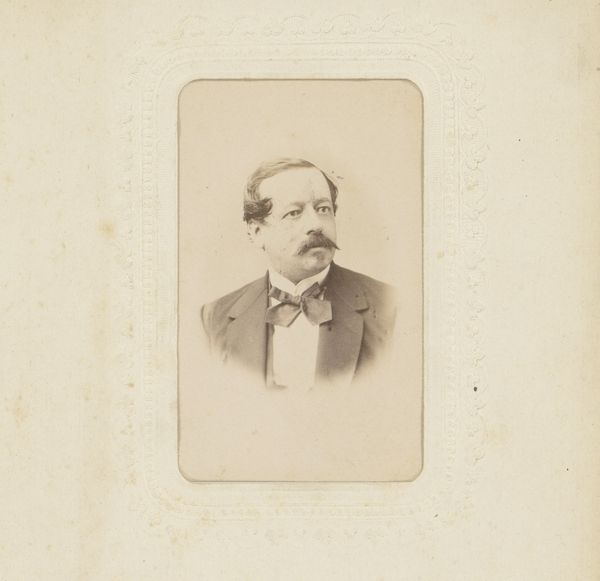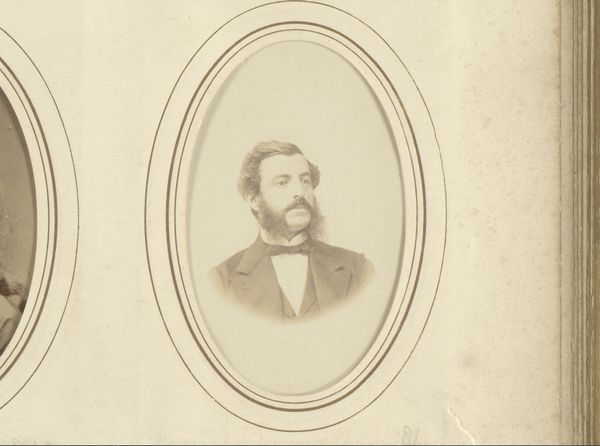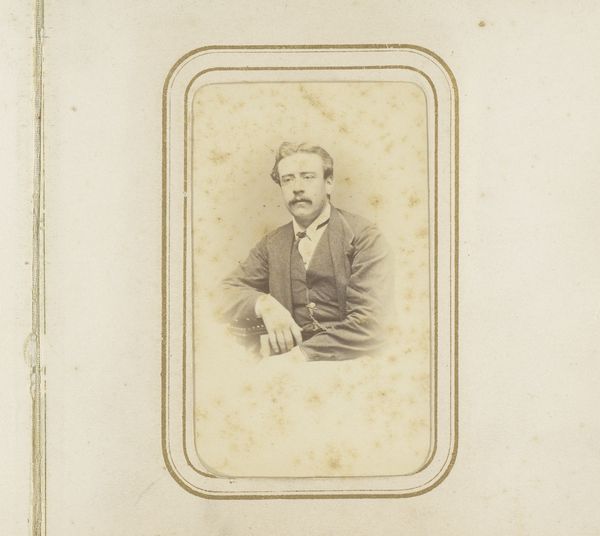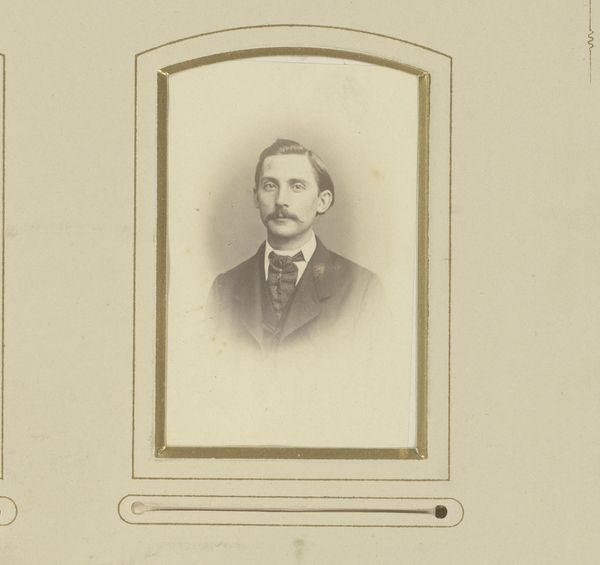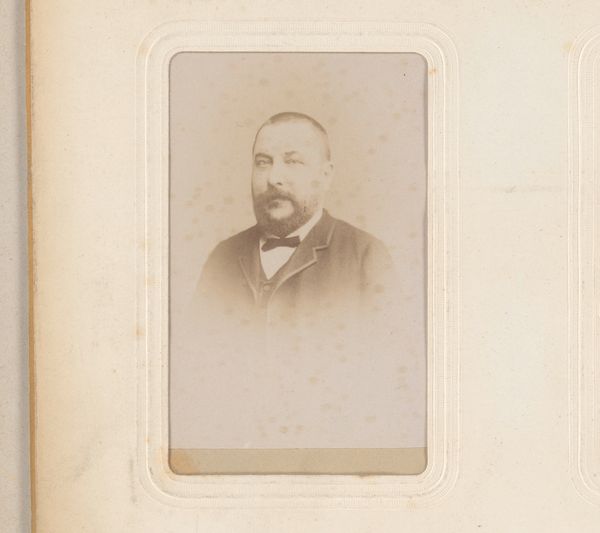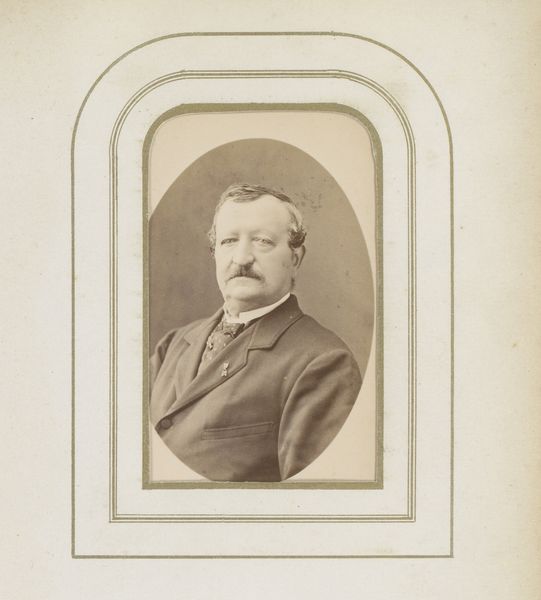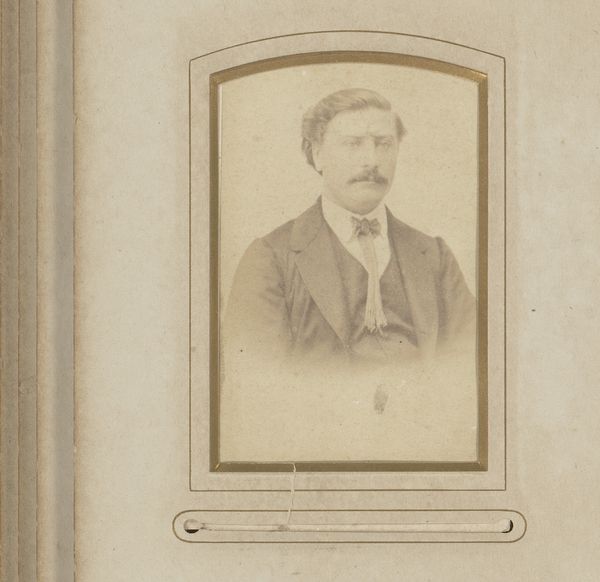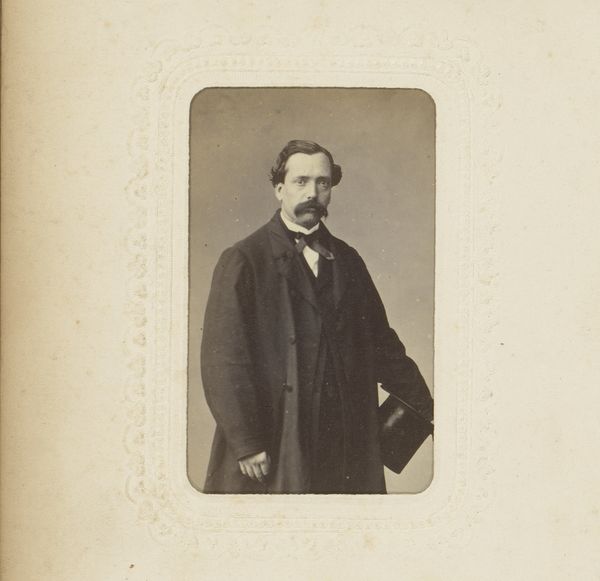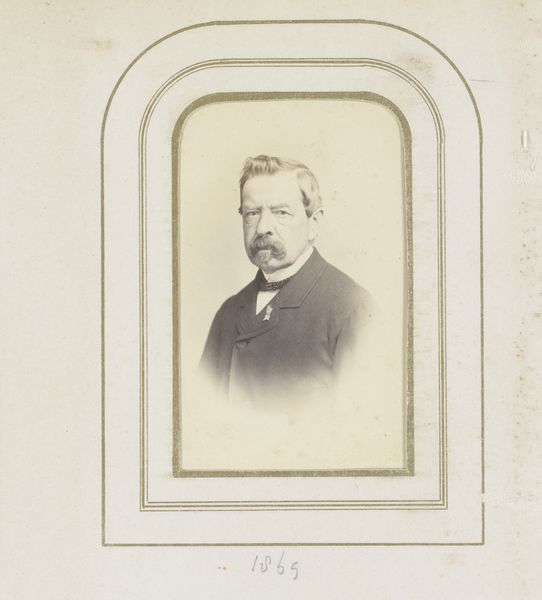
photography
#
portrait
#
photography
Dimensions: height 89 mm, width 57 mm, height 106 mm, width 64 mm
Copyright: Rijks Museum: Open Domain
Editor: Here we have "Portrait of a Man with a Mustache," created between 1872 and 1874. It's a photographic portrait, and the muted tones give it a wonderfully old-fashioned feel. What symbolic meaning or imagery do you recognize in this work? Curator: The most striking symbol here is, undoubtedly, the mustache. Beyond being a marker of social status and masculinity in the late 19th century, the careful cultivation of facial hair, the specific shape and style—these speak to the individual's aspirations, perhaps even anxieties, about how he is perceived. How does it strike you? Does the mustache tell you something about his persona? Editor: I hadn't really considered it like that! It's neat, definitely groomed with intention. Perhaps it speaks to a desire for control, or attention to detail? Curator: Precisely. And look closer at the eyes—they hold a hint of seriousness, or melancholy even. Consider what societal pressures were present then – a strict class system, burgeoning industrialization… These forces all contribute to an individual's construction of self, both internal and external. How do you think photography itself plays into that? Editor: That's a good question. Photography was newer then, maybe a status symbol too? A way of immortalizing oneself, performing your identity for posterity? Curator: Exactly! It allowed for a dissemination of self that painting previously had, but in a way that implied "truth" or "reality." It democratized the creation of personal visual history. Editor: So it's not just about a man with a mustache, but about the era, the cultural weight placed on image and identity. I am grateful for your insights. Curator: Indeed, art like this offers a rich field to examine cultural memory and continuity through simple symbols. It was a pleasure to share with you.
Comments
No comments
Be the first to comment and join the conversation on the ultimate creative platform.
